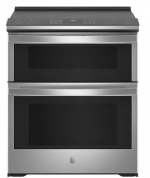- Location
- Chapel Hill, NC
- Occupation
- Retired Electrical Contractor
Say I have a 16 kw range - cooktop with a double oven- one piece. The nec states 40 amps would be compliant but obviously you may want to go higher. If this range were not in a residence I would have to use the nameplate which if the voltage were 240v the amps would be 67 amps.
Now can I run a #4 copper -no nm cable- at 75C and use a 80 amp breaker on this range?
For that matter can I install a #1 conductor @75c and use a 125 amp breaker.
I think you see where I am going. I know some of this is ridiculous but if the manufacturer doesn't state maximum breaker then it seems compliant, not practical. I am just wondering if there was something in the NEC that I am missing that would limit the overcurrent protective device.
Now can I run a #4 copper -no nm cable- at 75C and use a 80 amp breaker on this range?
For that matter can I install a #1 conductor @75c and use a 125 amp breaker.
I think you see where I am going. I know some of this is ridiculous but if the manufacturer doesn't state maximum breaker then it seems compliant, not practical. I am just wondering if there was something in the NEC that I am missing that would limit the overcurrent protective device.




